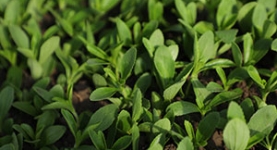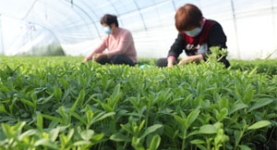In 2018, we partnered with Truterra™, the sustainability business of Land O’Lakes, one of America’s largest farmer-owned cooperatives, to develop a sustainable agriculture programme that uses cutting-edge technology to enable U.S. corn farmers combine precision agronomy with environmental impact to more effectively implement practice change. Truterra™ solutions ensure the practice changes that we’re promoting are economically viable for the farmers.
The programme expanded in 2019 to include 1.5 million acres (equivalent to the acres of corn procured globally). The programme was recognised as the largest registered continuous improvement project to date by Field to Market: The Alliance for Sustainable Agriculture1 from 2019-2021. In 2021, 1.4 million acres were enrolled in the program equivalent to our global corn procurement volume.
Success of our sustainable agriculture programmes is measured by the increased adoption of regenerative agricultural practices with continuous improvement in the metrics associated with soil health, greenhouse gas emissions, watershed quality and improved livelihoods.
Corn programme results and highlights
The programme has been running for three years and continues to support 1.5 million acres, more than 17,000 fields and over 1,400 growers.
Three-year results for retained acres* include:
- Soil quality improved by 2% as measured by Truterra’s Soil Conditioning Index. The Soil Conditioning Index measures organic matter levels in soil, which is an important metric as organic matter is a primary indicator of soil quality, the capacity to sustain plant productivity and support biodiversity. Soil organic matter is an important factor in carbon sequestration, the long-term storage of carbon dioxide, and efforts to tackle global climate change.
- Greenhouse gases were reduced by 5%, the equivalent of removing 5,966 petrol-powered cars from the road.
- Nitrogen use efficiency measures the efficiency with which soil nitrate-N from fertilizer, crop residue, manure, and soil organic matter, is converted into grain-N. Nitrogen use efficiency continues to be considered advanced within the industry at 1.04 pounds of Nitrogen per bushel; a 13% increase from 2019.
- Erosion is indicative of soil health and has watershed impacts. We’ve seen a 64% decrease in wind erosion over three years.
*While we have 1.5 million acres in the programme, we report results from ‘retained acres’ which are those acres that were in the programme in 2019 and 2020. Retained acres in 2021 were 1.09 million, representing an 73% grower retention rate, which we believe speaks to the value our partners see in the programme.

